This past week in Vermont, nature finally blew the barn doors off our cold season confinement. Goodbye raw days and small buds. Hello May flowers. Hello opulence. If the transition made a sound it would register as a stretching noise from hilltop to hollow — like a balloon pushed to nearly popping. Ring the bells, shake your behind, everything is easy again.
And, at the opposite end of feelings, we lost a chicken that was a special friend. A tiny white bantam named “Gossie,” she survived run-ins with predators and the loss of her foot to severe frostbite (living inside with us for four months during recovery) to grow into the most perfect peg-legged, tiny-egg-laying chicken there ever was. A day at our house wasn’t complete without sight of her stuttered walk and a greeting that begged for a moment on your lap. Her loss left me hopeless, despondent.
From boom to bust in the blink of an eye, you don’t have to look far to feel the yo-yo between the glory of life and suffering.
In hoping to better survive these highs and lows, therapy suggested that I look for stillness — embracing a mentality where I acknowledge what’s happening, but experience the events with more detachment. From that position, not on the rollercoaster but rather standing next to the track, I might not get hit by every ride that passes. That separation is similar to how one might meditate. I describe it this way: There goes thought. There goes feeling. Here I am, next to all of the clamor, focusing on my breath. Inside I’m still, not exactly unmoved but somehow also not wrecked.
Sounds good. But I’m horrible at it. I feel. I suffer. I love. I get upset and take tickets for all the rides. And when I’m in the yard and find a Gossie feather I still feel like it’s too much. I imagine that she might reappear, out from the ivy where she hid so many eggs. Loss is merely loss.
So, rather than trying to get off the rollercoaster, I’ve built my own. I paint it in splashy colors. I add loops, drops, high climbs, and corkscrews. I call it Gratitude. I’m riding gratitude and it helps. For family, for dear friends, for small chickens and the ways they all remind me that grace abounds, framed by the breadth of what we experience. On Gratitude, which rides like a refrain, following all things high and low, I return to a place on the track where I acknowledge the loss but also my love. It’s not an answer, solution, or antidote, but somehow it adds a context that helps. Riding Gratitude, I return to grace.
For the dough, this is classic brioche. Butter and whole eggs at 50% of flour weight make a maximally silky and tender cloud of high-rising dough. After an energetic mix, it’s chilled before shaping, proofing, and baking. (If you’re new to brioche this video is helpful for aspects of the process. My recipe, below, is a little softer (more butter) but this is a great aid, regardless!) While I’m using it for something sweet, brioche is perfect for everything from burger buns, to maritozzi, brioche coffee cake (in my book), loaves like nanterre, and even savory tarts. Its versatility guarantees foundational dough status.
*In terms of timing, this is ideally a two day dough. On day one you’ll mix then chill. On day two, you’ll prepare and chill the pastry cream then divide, and shape, rest for an hour, then top and bake. It’s not a lot of active work (other than mixing), but it does take planning.
*A note about the temperature of ingredients. In bakeries, we chill all ingredients for brioche — it helps to control dough temperature and keep things consistent. At home I’m a little looser. At a minimum, make sure that your butter is cold before pounding and adding to the mix and, in warmer seasons, be sure to use cold eggs. If it’s really hot where you are, chill the flour as well.
Strawberry brioche custard tarts
Yield: Two 9” tarts, plus 8 small pastries
All-purpose flour, 400g
Salt, fine, 10g
Yeast, instant, 10g
Water, 50g
Eggs, 200g (about 4 medium)
To the bowl of a stand mixer fitted with a dough hook, add the flour, salt, and yeast and stir until combined.
Add the water and whole eggs and mix on low speed (speed two in a KitchenAid) until the dough is homogenous, stopping to scrape the sides, bottom, and dough hook, as necessary. The dough will start out dry and resist incorporation but will eventually smooth out, about 4 to 5 minutes. If it seems especially tight or resistant to mixing, slowly drizzle in a small additional amount of water or egg to soften it. It’s important that the dough be firm in order to build the strength required to support the high ratio of butter that we’ll add. If you’re new to brioche, here’s a video that will help.
Cover the mixer and rest the dough for 20 minutes. (This allows the flour to hydrate and begin to develop strength.)
Sugar, 48g
After the rest, add the sugar and mix on medium speed (about speed four in a KitchenAid) until the dough is smooth, cohesive, and homogenous, about 4 to 5 minutes. The dough will resist the incorporation of the sugar at first, just keep going.
Butter, unsalted, 200g (if you don’t have unsalted, use salted but reduce the batch salt slightly to 8g)
Pound the chilled butter into flat, pliable pieces with a rolling pin to a thickness of ¼- to ½-inch. With the mixer running on medium speed, add the butter in 5 to 6 stages. Allow each addition of butter to incorporate before adding the next. This process may take as long as 6 to 8 minutes.
After all the butter is incorporated, let the mixer run until the dough is smooth, glossy and mostly pulls away from the sides of the bowl, another 3 to 5 minutes. Scrape the sides of the bowl, fold the dough into a cohesive ball and place in a greased container and set in the fridge for 4 to 24 hours. During the chill the dough will firm and develop flavor.
Between the time the pastry goes into the fridge and when you plan to work it up, prepare the pastry cream (recipe below) and chill until use.
*In the following steps you’ll divide the fermented dough, preshape into rounds, then roll to shape after a brief rest. After rolling the dough will rise for about an hour before you top and bake.
To shape the tarts, deposit the dough on a lightly floured surface. The 900g batch is enough to make ten tarts: two 9” brioche tarts at 200g each plus 8 smaller 4” tarts at 60g each. If you do not have a 9” tart ring, a 10” (or 10” springform pan) will work, just increase the dough weight to 250g. If this all seems like too much pastry, consider using some of the dough for burger buns (75g), or a nanterre loaf (8 pieces tightly rounded and placed in a buttered standard loaf pan). *Note that for the nanterre or burger buns the final proof will be very long, two to three hours in a moist environment. Egg wash before baking.
For the brioche tarts, round the pieces tightly and rest briefly before rolling into 8” rounds for the large and 4” rounds for the small. For the large tarts, butter the 9” tart rings and place the dough inside, pressing to the edges. Place the smaller pieces on a half sheet tray lined with parchment, distributed in a 3-2-3 pattern. Rest everything, covered, for 45 minutes to 1 hour.
While the tart shells warm up and rise, preheat the oven to 400°F and prepare the strawberries.
Strawberries, 454g
Sugar, 20g
Clean, destem, and halve any large berries, then cut into 1/8” slices. In a small bowl, toss with the sugar to coat. Rest the mixture then strain before topping the tarts. Save the liquid to use as glaze for the tarts after baking.
Egg wash, 1 egg
After the rest, gently flatten the dough from the center to the side of the tart ring, being careful to leave a ½” border untouched (in other words, don’t degas the edge crust). For the small pieces, firmly press the middles out to the edge, leaving a ½” border untouched. Generously egg wash the borders of both sizes.
Pastry cream (recipe below), 125g each for the large, 25g each for the small
Prepared berries, 150g each for the large, 15 to 20g for the small
Pearl sugar for garnish
Fill the tarts. Add pastry cream to the shell and spread to the edge but not over the border that was created during shaping. Then add the berries, distributing them evenly over the pastry cream. Garnish the edge with pearl sugar. Note: An easy way to add the correct amount to the tart shells is to put the tart pan or sheet tray on a scale. Tare the scale, then add the correct amount, taring between each addition.
After topping, bake until deep golden brown (almost chestnut), rotating at the halfway point. As I’ve said before, the tool in the kitchen with the least calibration is your oven. Rotate both top to bottom and front to back, as necessary. In my house the smaller size has been baking for 18 to 22 minutes and the larger size goes for 22 to 26 minutes.
While the pastry bakes, reduce the strained strawberry liquid to the consistency of syrup. This can be done on the stovetop or in the microwave.
After baking, remove and cool briefly before blotting the berries with the reduced liquid using a pastry brush. As the berries are sitting atop warm pastry cream, it won’t work to brush the liquid on, just blot or stipple it for a nice shiny, and flavorful result. Any leftover liquid can be added to seltzer or a cocktail.
Pastry cream
This is a very good, basic pastry cream. You can make it fancy with citrus zest, ginger, Earl Grey or other infusions by adding them to the milk as it simmers (straining before use). In this instance I don’t think it needs anything more than what’s below.
Milk, whole, 460g
Cornstarch, 28g
Salt, fine, pinch
Sugar, 100g
Egg yolks, 72g (about 4)
Butter, unsalted, 28g
Vanilla extract or whiskey, 13g
To a medium sized pot, add the milk. Over medium heat, bring to a simmer.
While the milk heats, into a small bowl, combine and sift the sugar, cornstarch, and salt.
In a medium bowl, stir the egg yolks with the vanilla. Add the cornstarch mixture, then whisk until smooth.
Whisk 1 cup of the simmering milk into the egg mixture, stirring constantly. Whisk until fully combined. Continue to whisk, and add the egg mixture into the warm milk.
Cook, stirring constantly, over medium heat until the mixture boils and thickens, about a minute or two. Remove the pot from the heat. Add the butter, stirring until it completely melts. Cover with plastic wrap and chill until use. Whisk briefly before use.
For the smoothest pastry cream you may strain it immediately after it sets. I rarely bother. Pastry cream will keep for 3 to 4 days, chilled.
Dedicating this one to sweet Gossie. Special thanks also to Posie Brien for her editing and insight, and to Tristan Bellerive for the great guitar tracks on the videos. And thanks to you, dear reader, for coming along. Be well, y’all. Martin

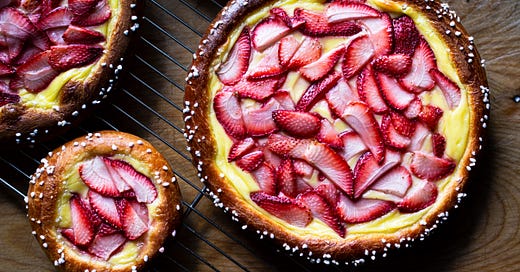


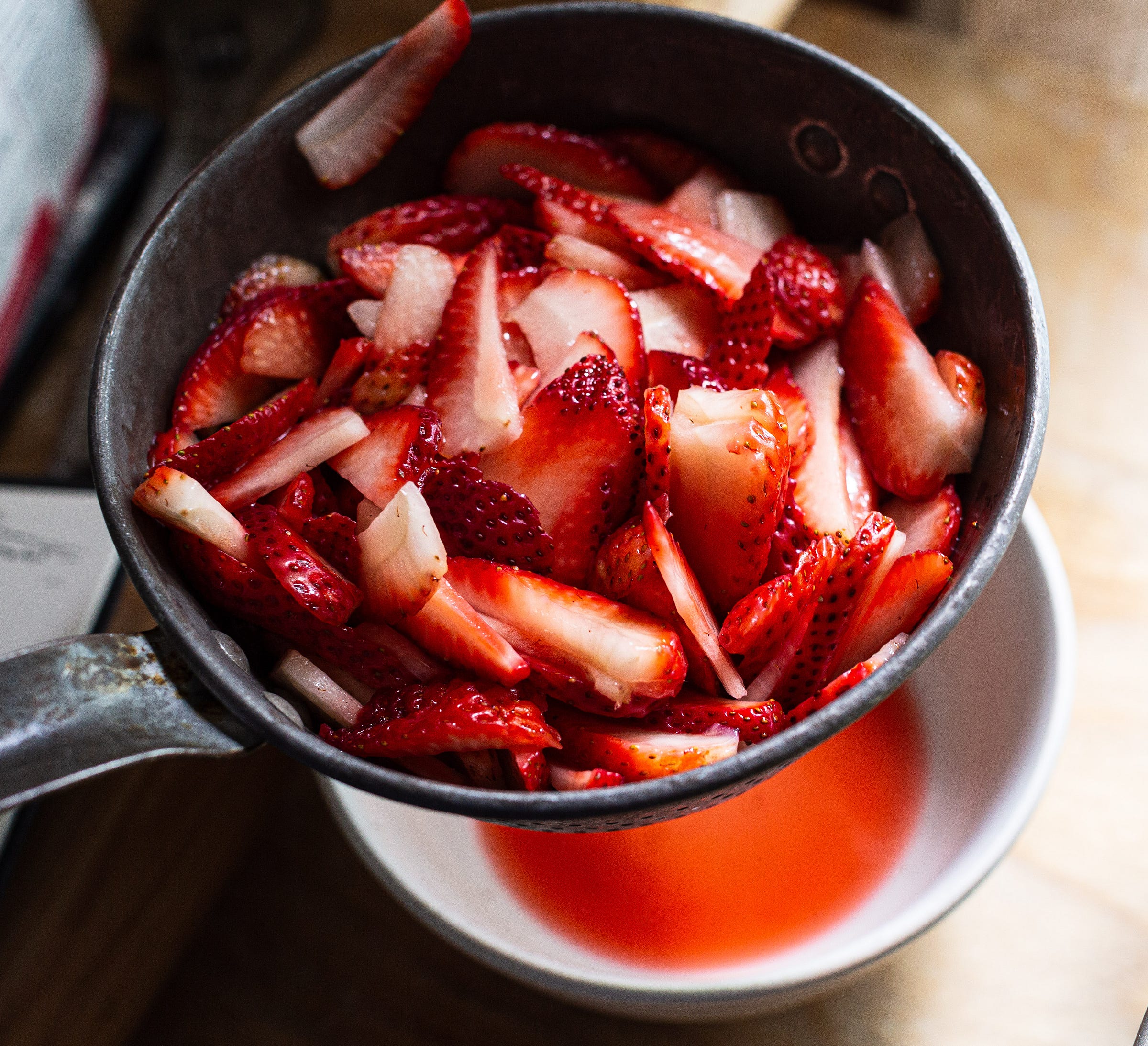

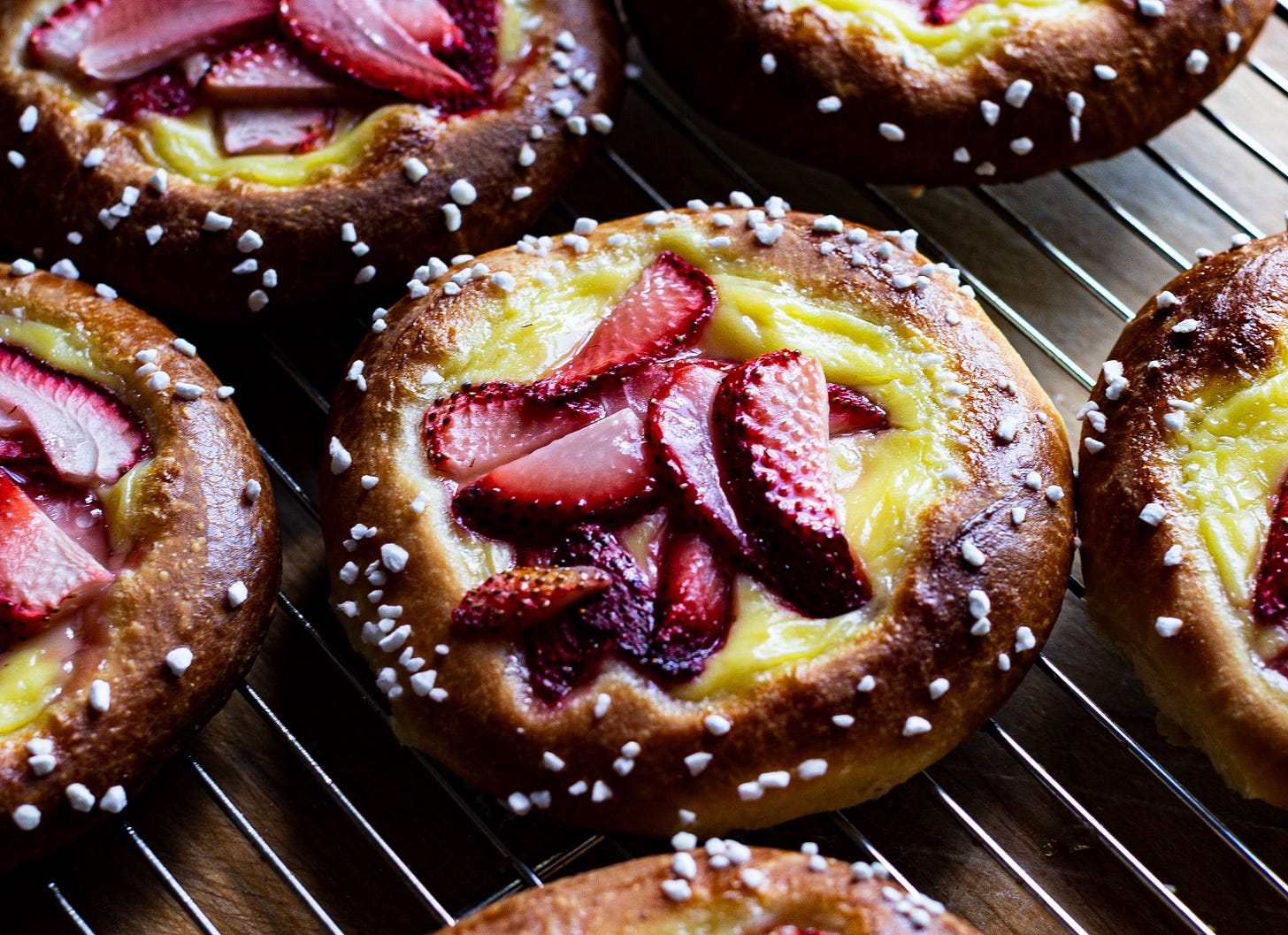
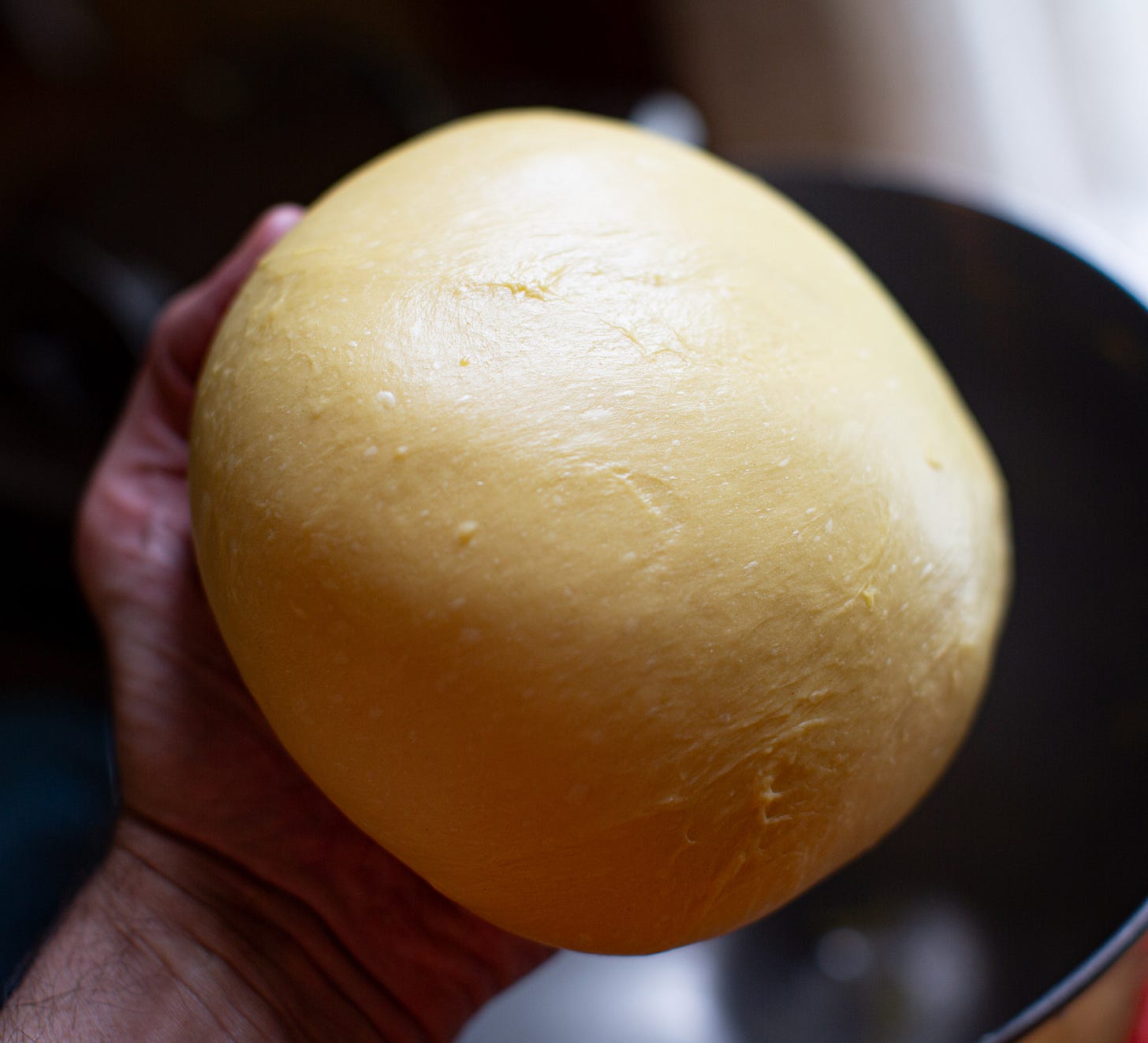
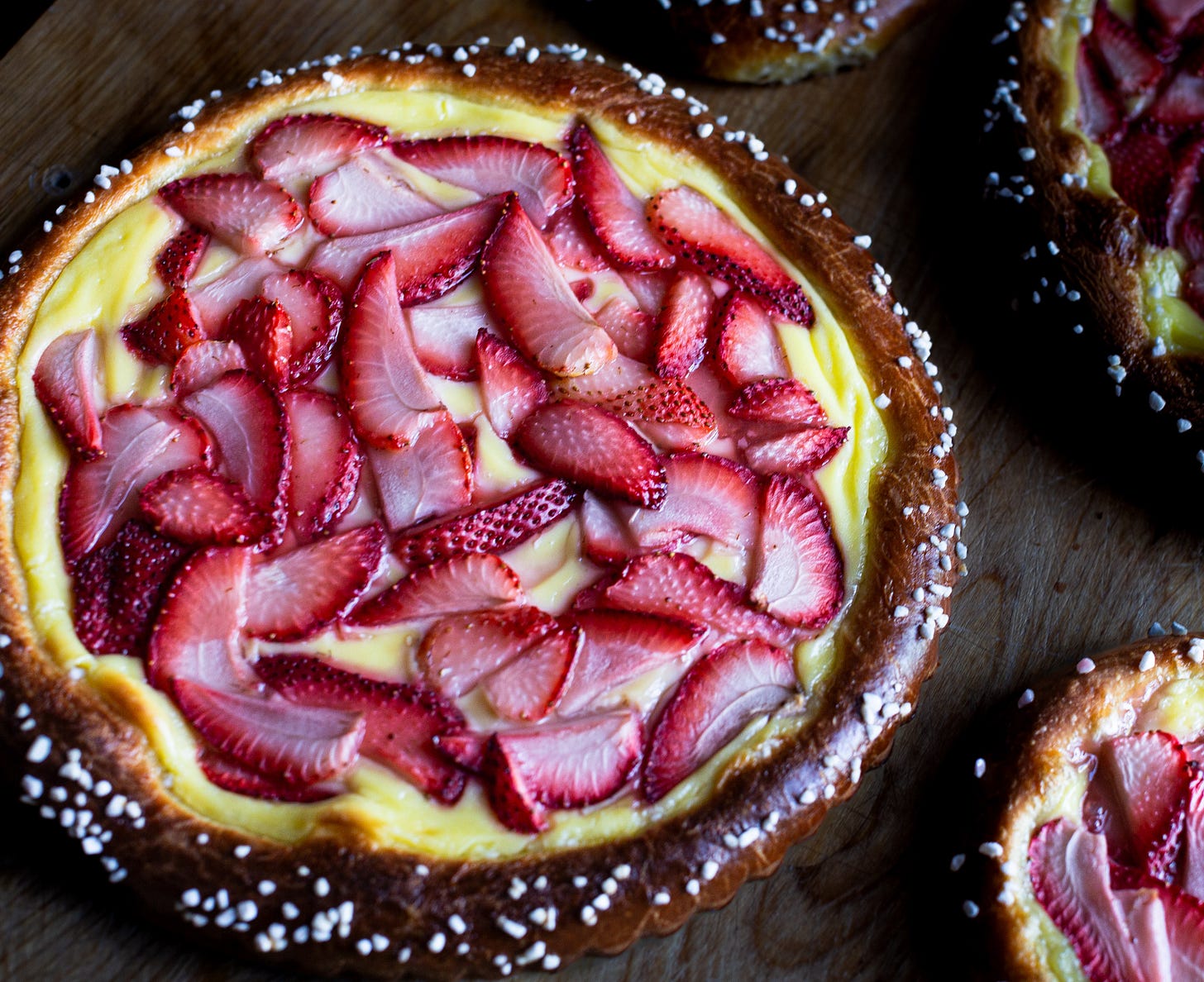

Your writing is beautiful and so is every single bake you share here. I truly am in awe and as a person who does not typically bake much (too much science!), I am inclined to try some of your recipes. You are a gem in this space, and I hope you continue to do more videos and I hope another cookbook is in the making. Gorgeous.
"Sounds good. But I’m horrible at it. I feel. I suffer. I love. I get upset and take tickets for all the rides."
I couldn't have explained it any better! Your words brought me in and brought me tears, for the memories of my beautiful lost feathery and furry friends, and the fact that I am not good at becoming somewhat detached and still able to be me, maybe I require more work.
To Gossie, which I have never met, but is like she had been in my backyard and took naps on my lap.
This weekend I will make the beautiful brioche tart to honor them all :-)
With Gratitude
Grazie.